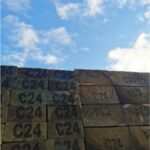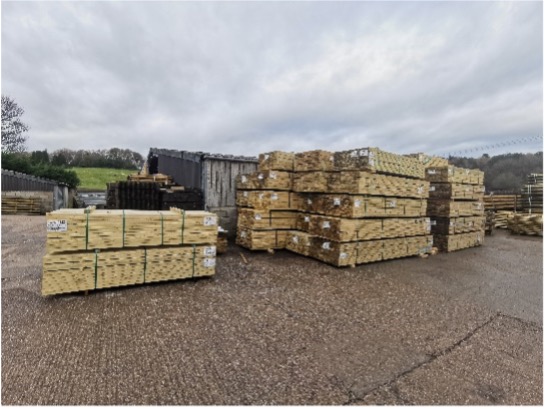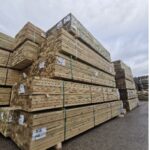What does C16 and C24 mean?
‘C16’ and ‘C24’ refer to the strength grade of a piece of timber. There are 12 strength grades which are set by British Standards to deem timber suitable for construction, the 2 most common being C16 and C24. To comply with these standards both C16 and C24 timber must be graded and kiln-dried to ensure that there is no more than 20% moisture content.
Both C16 and C24 graded timber has been tested to be classed as C16 or C24. This testing is important to establish the strength and integrity of the timber to ensure that it is safe and strong enough for this use.
What is the difference between C16 and C24?
 Although C16 is strong enough for some construction applications, C24 comes with additional benefits. C24 timber has been graded at a higher standard and can therefore handle higher loads and wider spans. C24 timber is usually achieved from timber that has been imported from areas where the climate forces a slower growth rate of the trees. This slower growth rate promotes a tighter grain and therefore improves the strength and integrity of the timber.
Although C16 is strong enough for some construction applications, C24 comes with additional benefits. C24 timber has been graded at a higher standard and can therefore handle higher loads and wider spans. C24 timber is usually achieved from timber that has been imported from areas where the climate forces a slower growth rate of the trees. This slower growth rate promotes a tighter grain and therefore improves the strength and integrity of the timber.
What you need to know…
- If you can’t see a stamp on the wood, don’t use it. All graded timber will be stamped with C16 or C24.
- If you re-saw the timber within the cross section or thickness, then the strength grade of the timber can be compromised.
- Our C24 timber is a mix of Scots Pine or Norway Spruce. The majority of our graded timber is also green treated as standard to prevent against rot and decay.
Discover our range here available instock and online for delivery.



